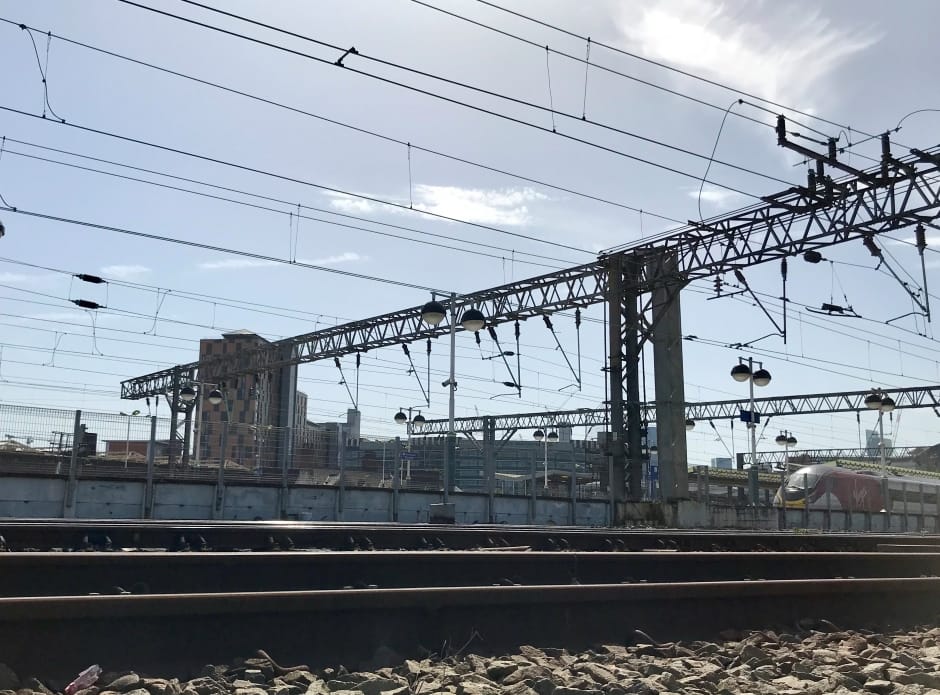
According to team leader Hwa-yaw Tam, from The Hong Kong Polytechnic University, the fibre accelerometers could be used for real-time monitoring of defects in the railway track or the train to pinpoint problems before an accident occurs. The research is described in Optics Express.
The researchers have spent over a decade developing condition-monitoring systems that use an all-optical sensing network to continuously monitor critical railway components. These systems can help replace inefficient and costly scheduled railway maintenance routines with predictive maintenance based on actual conditions. Systems developed by the researchers have been installed in Hong Kong and Singapore.
"An all-optical sensing network has many advantages as it is immune to electromagnetic interference, has long transmission distance and the sensors don't require electricity," said team member Zhengyong Liu. "However, there is a need for fibre-optic sensors that are optimised to measure different parameters in railway systems."
The fibre-optic accelerometers typically used in condition-monitoring systems are based on fibre Bragg gratings (FBGs) and cannot be used to detect vibrations higher than 500Hz, which is adequate for most railway applications but can't be used to measure the wheel-rail interactions that are a source of track wear.
To overcome this problem, the researchers designed a new fibre-optic accelerometer that uses a polarization-maintaining photonic crystal fibre that is coiled into the shape of a disc measuring 15mm in diameter. The coiled fibre is glued between a stainless-steel substrate and a cylindrical mass block. When a vibration occurs, the mass block presses on the coiled fibre at a frequency matching the vibration. This external force causes the wavelength of light in the fibre to shift in a measurable way.
"This interferometric configuration uses changes in the light inside the fibre to acquire precise information about the vibrations," Liu said in a statement. "Installing these accelerometers on the undercarriage of an in-service train allows them to monitor vibrations that would indicate defects in the track. They can also be used to detect problems in overhead lines used to power trains."
Following lab tests the researchers carried out field trials by installing the device on an in-service train. They also installed an FBG-based accelerometer and a piezoelectric accelerometer for comparison.
They found that the new fibre accelerometer detected acceleration in a manner similar to the piezoelectric accelerometer. However, piezoelectric sensors require expensive shielded cables to reduce the effects of electromagnetic interference noise. Because the FBG-based accelerometer can't operate well at high frequencies, noise concealed some of the useful vibration information.
"Our results showed that our new accelerometers perform considerably better than existing accelerometers used for monitoring acceleration in trains," Liu said.
In this work, the researchers used a commercial polarisation-maintaining photonic crystal fibre but have since designed and fabricated a new type of fibre with smaller outer diameters, lower bending losses and higher birefringence, all of which would allow them to build a smaller accelerometer with even higher sensitivity.
"These new accelerometers could open new sensing and monitoring possibilities by providing data that supports implementation of artificial intelligence in the railways industry," said Tam. "Although railway monitoring is a good example of how fibre-optic sensing can be combined with artificial intelligence, we believe this combination is also promising for a number of other industries and applications."




Poll: Should the UK’s railways be renationalised?
Rail passenger numbers declined from 1.27 million in 1946 to 735,000 in 1994 a fall of 42% over 49 years. In 2019 the last pre-Covid year the number...